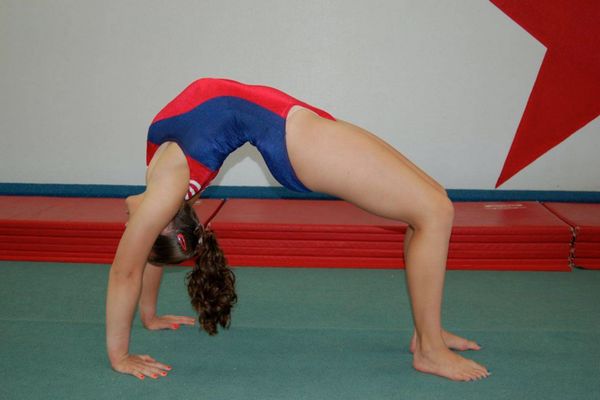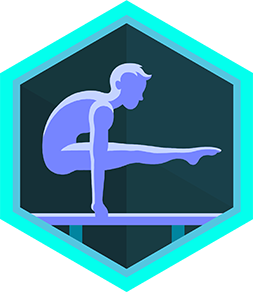Master a backbend kickover
Learn and practice a safe backbend kickover through warmups, flexibility drills, progressions, and spotting techniques to build strength, balance, and confidence.



Step-by-step guide to master a backbend kickover
How to do a Backbend Kickover! Learn how in less than 7 Minutes!!!
Step 1
Clear a wide soft area and lay your mat so you have plenty of room to move.
Step 2
Jog in place or do jumping jacks for 2 minutes to raise your heart rate.
Step 3
Do wrist circles for 30 seconds to warm up your wrists.
Step 4
Do shoulder rolls forward and backward for 30 seconds to loosen your shoulders.
Step 5
Do 10 cat-cow spinal mobilizations on hands and knees to warm your back.
Step 6
Do 3 bridge holds lying on your back with feet flat and push your hips up for 5 deep breaths each.
Step 7
Do a 30-second hamstring stretch on each leg by reaching toward your toes with a straight back.
Step 8
Practice stepping back into a strong bridge: start in a lunge then push your back leg back and lift into a bridge; hold for 3 seconds and step down.
Step 9
Have your adult spotter stand behind you and place their hands at your lower back and hips to support you safely.
Step 10
With your spotter helping, practice small kickover attempts from a lunge by kicking your back leg up and letting the spotter guide your hips over; do 5 gentle tries.
Step 11
Try a full kickover with your spotter ready to support and catch your hips as you kick through into standing; stop if anything feels painful.
Step 12
Share a photo or short video of your new backbend kickover on DIY.org so others can cheer you on.
Final steps
You're almost there! Complete all the steps, bring your creation to life, post it, and conquer the challenge!


Help!?
What can we use if we don't have a gymnastics mat or a wide soft area?
Use several folded yoga mats, thick blankets, or a grassy lawn for padding, and if an adult spotter isn't available practice the stepping-back-into-a-strong-bridge and gentle kickover drills against a sturdy wall or doorway while a grown-up supervises.
I'm having trouble getting my hips over during the kickover—what step might I be missing and how do I fix it?
Spend extra time on the 3 bridge holds and the stepping-back-into-a-strong-bridge drill, loosen tight hamstrings with the 30-second hamstring stretch, and have the spotter place hands at your lower back and hips to guide your hips over during the 5 small kickover attempts.
How should we change the activity for younger children or for older kids who want more challenge?
For ages 4–6 use shorter bridge holds with full spotter support and smaller kickover taps, for ages 7–10 keep the same sequence but increase bridge hold duration and supervised reps, and for 11+ add extra shoulder and wrist strength or more repetitions before attempting unassisted kickovers.
How can we extend or personalize the practice after the child can do a backbend kickover?
To extend the activity, film slow-motion clips to analyze form, increase consecutive kickovers, add progressions like single-leg bridge holds or a yoga wheel for deeper backbends, or create a short routine that you share as the final DIY.org achievement video.
Watch videos on how to master a backbend kickover
How to Do a Backbend from Standing | Easy Step-by-Step Tutorial for Kids | Oramae Play
Facts about gymnastics and flexibility training for kids
⏱️ Short, consistent practice sessions (about 10–15 minutes daily) usually improve flexibility and technique faster than one long session.
💪 A strong core, glutes, and shoulder stability are just as important as back flexibility for a controlled kickover.
🛡️ Good spotting techniques reduce injury risk and teach body awareness — a spotter guides and supports movement, not just ‘catches’ it.
🦴 Kids' spines tend to be more flexible than adults', which can make backbends easier when practiced safely.
🤸♀️ Learning a bridge kickover is often one of the first big “wow” moves for young gymnasts — it builds confidence fast.
How do I teach my child to do a backbend kickover safely?
What materials do I need to practice a backbend kickover at home?
What ages are appropriate for learning a backbend kickover?
What safety tips should parents follow when teaching a backbend kickover?


One subscription, many ways to play and learn.
Only $6.99 after trial. No credit card required



